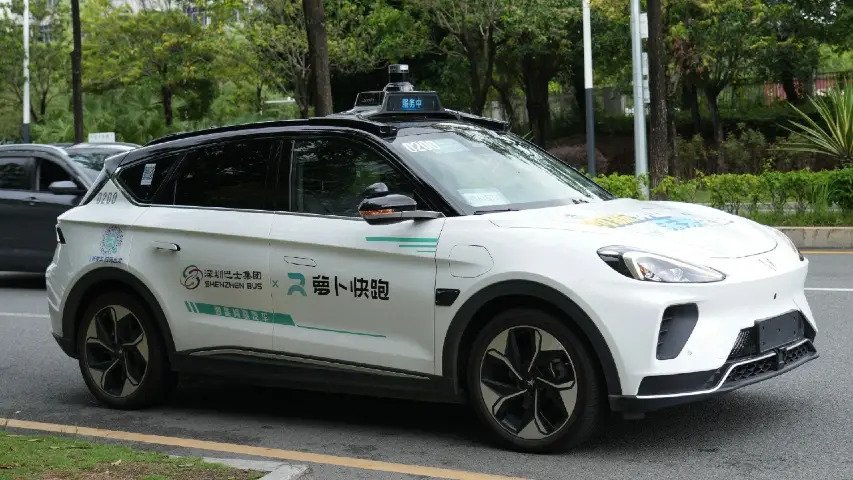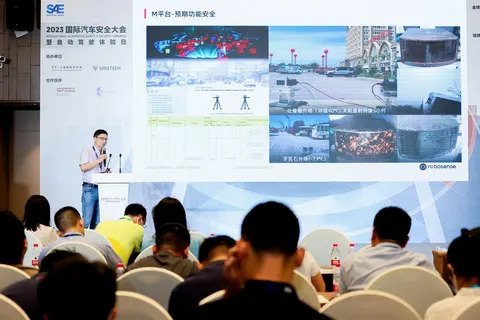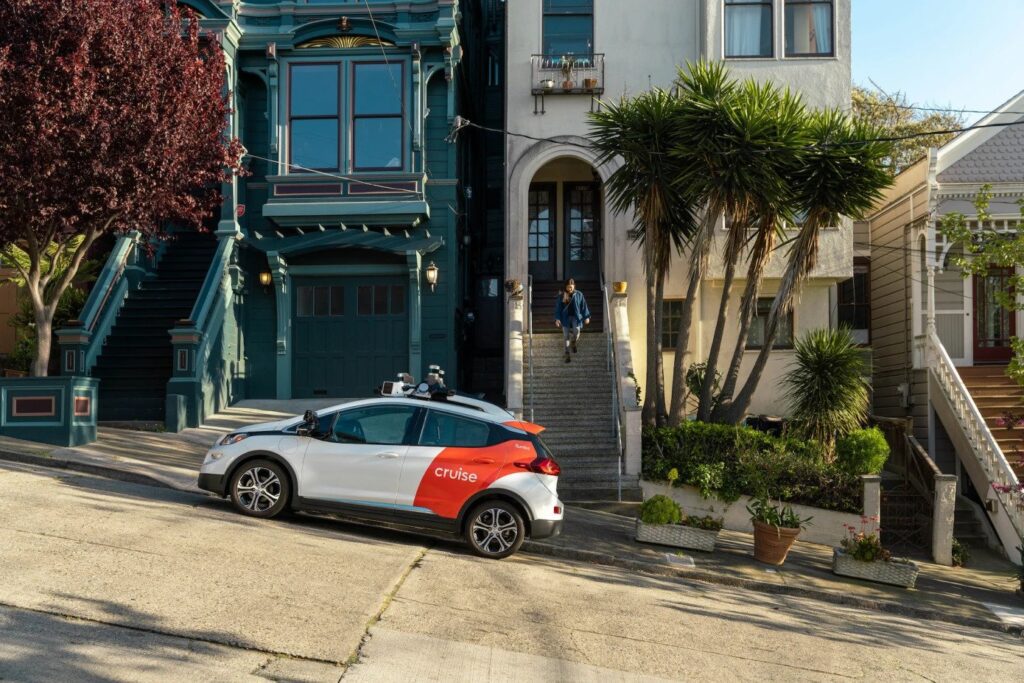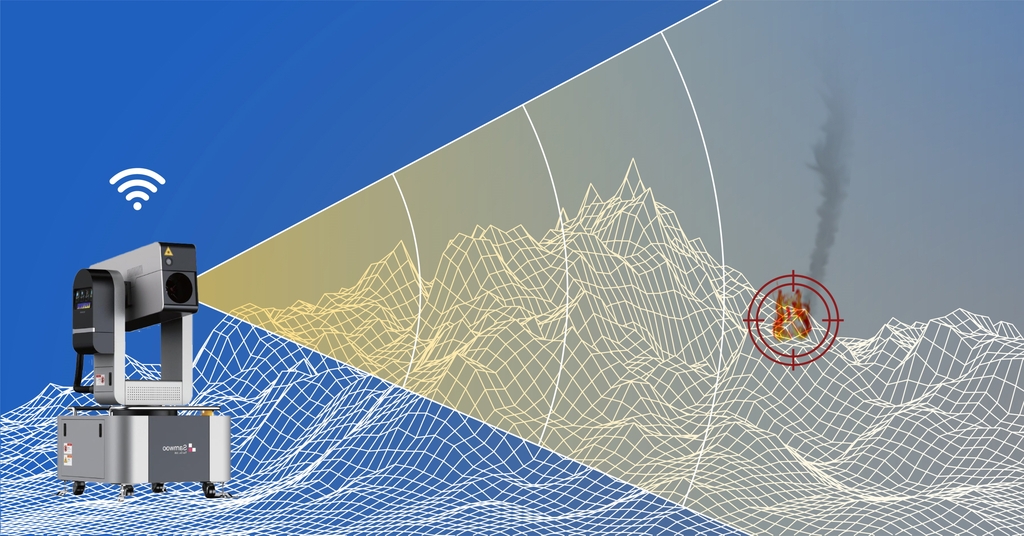
Vueron Newsletter
No. 24
2023.06.23
| Baidu launches commercial fully driverless ride-hailing service in Shenzhen | ||
| Aurora Releases Open-Source Autonomous Driving Dataset | ||
| Cruise rolls out Android app for robotaxi service | ||
| LiDAR technology to monitor forest fires… AICT to develop early detection system |
1. Baidu launches commercial fully driverless ride-hailing service in Shenzhen
-
- Baidu has obtained a license to operate its fully driverless ride-hailing service in Shenzhen, making it the fourth city in China to offer this service.
- Baidu’s Apollo Go robotaxis will operate in Shenzhen from 7 a.m. to 10 p.m. daily, covering an area of 188 square kilometers.
- Users can access the service through the Apollo Go app, mini-program, Baidu Maps, and Baidu App.
- This licensing expansion extends Baidu’s commercial fully driverless ride-hailing services nationwide and paves the way for future expansion across China.
- Baidu plans to deploy 200 additional fully driverless robotaxis in 2023, aiming to establish the world’s largest fully driverless ride-hailing area.
- Apollo Go has received positive feedback from users, with an average user rating of 4.9 out of 5 and a significant increase in active users and user engagement.
- By the first quarter of 2023, Apollo Go had provided over 2 million rides, solidifying its position as the world’s largest autonomous ride-hailing service provider.

Baidu’s achievement in securing a license for fully driverless ride-hailing services in Shenzhen demonstrates the progress and acceptance of autonomous driving technology in China. The expansion of Baidu’s autonomous ride-hailing service to Shenzhen enhances transportation options for commuters and contributes to the development of smart city infrastructure. Baidu’s success in the autonomous ride-hailing industry positions the company as a significant player in the global autonomous vehicle market.
2. Aurora Releases Open-Source Autonomous Driving Dataset
-
- Aurora Innovation has released the Aurora Multi-Sensor Dataset, a large-scale multi-sensor dataset for autonomous vehicle localization.
- The dataset contains rich metadata, including semantic segmentation, and covers various weather conditions, times of day, and traffic conditions.
- It is significantly larger than other publicly available localization datasets and can be used for the development and evaluation of autonomous vehicle localization approaches.
- The dataset was previously introduced as PIT30M at the International Conference on Intelligent Robots and Systems (IROS) 2020.
- Aurora aims to contribute to engineering research and development in the autonomous systems field by making this data available to the academic community.
- The data was captured in Pittsburgh, PA, between January 2017 and February 2018 by Uber Advanced Technologies Group (ATG), which was acquired by Aurora in January 2021.
- The dataset includes data from a 64-beam Velodyne HDL-64E LiDAR sensor and seven cameras with a 360º view around the vehicle.
- The Aurora Multi-Sensor Dataset is hosted on Amazon S3 and is intended for non-commercial academic use under a Creative Commons license.

The release of the Aurora Multi-Sensor Dataset provides researchers and developers in the autonomous vehicle industry with a valuable resource for advancing localization algorithms and techniques. By making the dataset available to the academic community, Aurora encourages collaboration and innovation in the field of autonomous systems. The use of multi-sensor data, including LiDAR and cameras, reflects the importance of sensor fusion in autonomous driving systems.
3. RoboSense Shares Leading Safety Practices in LiDAR Industry at 2023 International Automotive Safety & Security Congress
-
- RoboSense delivered a keynote speech and participated in a panel discussion at the 2023 International Automotive Safety & Security Congress in Shanghai.
- The company shared its safety practices and experiences in LiDAR technology, focusing on the role of LiDAR in autonomous driving systems and overall vehicle safety.
- RoboSense has developed a modular product design approach for its M-Series LiDAR, ensuring a comprehensive safety technology system.
- The safety system covers functional safety, anticipated functional safety, network security, and perception safety.
- RoboSense complies with industry standards such as ISO 26262, ISO 21434, UL 4600, ISO 5469, ISO 21448, and ISO 34502.
- The company has a team of highly experienced professionals with expertise in safety design and analysis, holding relevant certifications.
- RoboSense is committed to advancing LiDAR safety practices and driving innovation in the integration of LiDAR technology in intelligent driving systems.
- RoboSense aims to set industry standards, ensure the safe and reliable integration of LiDAR technology, and promote innovation in the field.

The article highlight the importance of LiDAR in autonomous driving, RoboSense’s commitment to safety, its expertise and certifications, contribution to industry advancement, and the company’s positioning as a trusted partner in the field.
4. Cruise rolls out Android app for robotaxi service
-
- Cruise, a self-driving car company, has launched an Android app for its robotaxi service.
- The app allows users to hail a self-driving taxi directly from their Android smartphones.
- Users can input their destination, view estimated arrival times, and track the vehicle’s progress in real-time.
- The app also includes features such as a passenger safety checklist and an emergency button.
- Cruise’s robotaxis are currently operating in San Francisco, and the app is available to residents in the city.
- The Android app release follows Cruise’s launch of an iOS app earlier this year.
- The company plans to expand its robotaxi service to other cities in the future.

Cruise is making strides in the autonomous vehicle market by introducing an Android app, expanding accessibility for potential users. By launching the Android app, Cruise aims to tap into a wider user base and potentially attract more customers. The company’s move to develop both iOS and Android apps demonstrates its commitment to reaching a broader audience across different mobile platforms.
5. LiDAR technology to monitor forest fires… AICT to develop early detection system
-
- The Advanced Institute of Convergence Technology (AICT) has been awarded a government-funded project for the development of a Lidar-based mid- to long-range forest fire early warning technology.
- The research team includes Prof. Noh Young-min of Pukyong National University, Prof. Choi Woo-seok of Sejong University, Samwoo TCS, and Otis.
- The project is part of the Ministry of the Interior and Safety’s Cooperative Technology Development Project for Disaster Safety, with 4.6 billion won in funding until 2026.
- Current methods for preventing forest fires, such as forest fire monitors, CCTVs, and drones, face limitations in early detection and long-distance response.
- AICT plans to develop a new forest fire early detection system based on fine dust scanning lidar technology.
- The lidar technology can scan a wide range of 360 degrees, detect wildfire smoke in light fog, and cover a large area at once.
- The goal is to increase the measurement radius to 10 kilometers and develop unmanned, remote, and automated monitoring equipment.
- The system will enable early detection of smoke, tracking of ignition points, and rapid response for effective initial fire extinguishment.
- AICT aims to install the developed system in northern Gyeonggi-do and Gangwon-do provinces and conduct empirical research in cooperation with relevant organizations.
- The research is expected to help prevent, control, extinguish, and respond to large forest fires and make the technology available to national and local governments.

The use of lidar technology for forest fire detection provides advantages such as wide scanning range, ability to detect smoke in light fog, and coverage of large areas. By increasing the measurement radius and developing unmanned monitoring equipment, the system will enable more effective initial response and help control the spread of forest fires.
*Contents above are the opinion of ChatGPT, not an individual nor company

